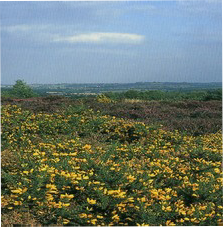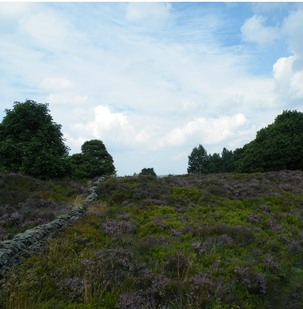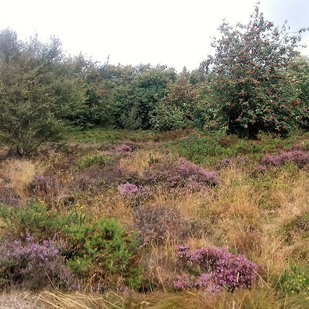

Biodiversity
Action
Plan

Lowland heathland. Adding colour to the landscape, Lowland Heath has open, low-growing, woody vegetation made up of heather, bilberry and gorse. Heaths have been maintained free of trees by grazing, scrub clearance and sometimes periodic burning; they support a range of wildlife including birds, mammals, reptiles and invertebrates.
Lowland heath is rather scarce and fragmented in Barnsley, found on the edges of slopes of sandstone hills, on former commons, and sometimes, where the conditions are right, on former pit-stacks.
Lowland heath occurs below the upland moors and the upper limit of farming enclosure, normally below the 300 metre contour. It is an open habitat found on poor acidic sandstone soils and thin peat soils. Heaths are the product of human activities and if neglected turn into scrub and woodland.
Common Heather (calluna) is the most common dwarf shrub in lowland heaths in Barnsley, together with areas of Bilberry and Common Gorse. However Bell Heather (erica) is also found and there are some places supporting the locally rare Western Gorse. Where there has been heavy grazing and burning, Wavy hair-grass is found with the heather.
Lowland Heathland supports Linnet, Whinchat, Stonechat, Wheatear and in places like Wharncliffe Heath, the scarce Nightjar. It is also home to Brown Hare and Common Lizard, as well as some highly specialised plants especially bryophytes and lichens, and invertebrates including Green Hairstreak Butterfly and Green Tiger beetles.
For more information on Lowland Heath, follow these links:
Priority habitat details
Lowland heathland is a local priority habitat because of its national status, the species it supports and, although scarce in Barnsley, the potential for its conservation.
Lowland Heathland is a UKBAP priority habitat and Section 41 habitat of principal importance.
Lowland Heathland’s UkHab category is h1b
Phase 1 habitat surveys class it as dwarf shrub heath,
It has dwarf shrubs covering >25% of an area. Common Heather is the main dwarf shrub on lowland heaths.
The other shrubs present decide National Vegetation Classification (NVC) categories:
- Bilberry heath. H12
- Bilberry - wavy hair-grass heath, H18
- Wavy hair-grass heath, H9
- Bell heather heath, H10
- Western gorse heath, H8
The best heathland examples:
- have a good range of notable plants, or
- support good populations of species of conservation importance, eg birds, reptiles, invertebrates.
Some of the heath on areas close to the 300 metre contour are intermediate between upland and lowland heath with some characteristics of both.

Lowland Heath

